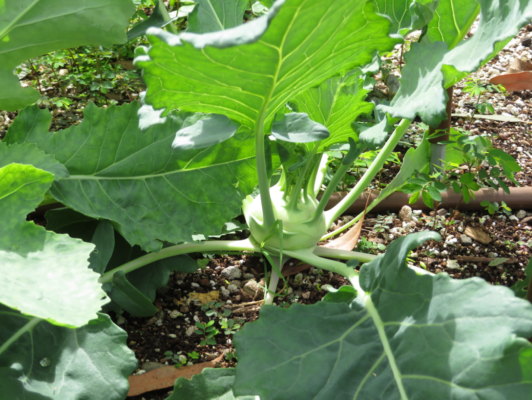Turnip Leaves Unlock the Nutritional Power and Culinary Delight: A Guide to Health Benefits
Ganth Gobi in Hindi and Nookal in Tamil

Table of Contents
Origin and Def.
Turnip is a root vegetable Scientifically known as Brassica Rapa subsp. rapa, turnips are characterized by their bulbous, edible taproot and green leafy tops. The root is typically white or cream-colored, although there are also varieties with purple or red skin.
Origin:
The turnip has a long history and is believed to have originated in Central and East Asia, with evidence suggesting that it was cultivated in ancient China and later spread to Europe. The vegetable has been a staple in various cultures throughout history due to its versatility, adaptability to different climates, and nutritional value.
Turnips have played a role in culinary traditions around the world and have been consumed for both their roots and greens. Over the centuries, different varieties of turnips have been developed through selective breeding, leading to the diverse range of shapes, sizes, and colors seen today.
Turnip Leaves
Turnip leaves, also known as turnip greens or tops, refer to the leafy green foliage that grows above the ground from the turnip plant (Brassica rapa subsp. rapa). These leaves are not only edible but also highly nutritious, offering a different set of flavors and textures compared to the root. Here are some key aspects of turnip leaves:
Nutritional Content:
Turnip leaves are rich in essential nutrients such as vitamins A, C, and K. They also contain minerals like calcium and folate. Additionally, these greens provide dietary fiber, making them a healthy addition to a balanced diet.
Flavor and Texture:
Turnip leaves have a slightly peppery and bitter flavor, reminiscent of other leafy greens in the Brassicaceae family. The texture can vary depending on the age of the leaves; younger leaves are tender and suitable for raw consumption in salads, while older leaves are often cooked to reduce their toughness.
Culinary Uses:
Turnip leaves are versatile and can be used in various culinary applications. They can be chopped and added to salads, sautéed as a side dish, or incorporated into soups and stews. In some cultures, turnip leaves are a common ingredient in traditional dishes.
Harvesting Practices:
When harvesting turnip leaves, it’s common to pick them while they are young and tender. This not only ensures better flavor and texture but also encourages the plant to continue producing more leaves. Harvesting can typically be done throughout the growing season.
Health Benefits:
The nutritional profile of turnip leaves contributes to their health benefits. Vitamin A is essential for vision and immune function, while vitamin K is important for blood clotting. The presence of antioxidants in these greens also supports overall health.
Cultural Significance:
Turnip leaves have been historically consumed in various cuisines around the world. In some cultures, the tradition of using the entire plant, both root and leaves, is deeply ingrained. The culinary use of turnip greens reflects the resourcefulness of communities in making the most of the plant’s edible parts.
Overall, turnip leaves are not only a delicious and nutritious component of the turnip plant but also showcase the culinary diversity and adaptability of leafy greens in different cuisines.
Nutrients
Vitamin A:
Supports vision health by maintaining the health of the cornea and other eye tissues. Contributes to immune function, helping the body fend off infections and illnesses. Important for skin health, promoting a radiant complexion and aiding in wound healing.
Vitamin C:
Boosts the immune system by promoting the production of white blood cells and antibodies. Enhances collagen synthesis, contributing to the health of skin, joints, and connective tissues.
Vitamin K:
Essential for blood clotting, preventing excessive bleeding from wounds. Contributes to bone health by regulating calcium and promoting bone mineralization. May play a role in reducing the risk of fractures and improving bone density.
Folate (Vitamin B9):
Important for cell division and DNA synthesis, crucial during periods of rapid growth and development. Supports cognitive function and mental health by aiding neurotransmitter synthesis. Particularly vital for pregnant women to prevent neural tube defects in developing fetuses.
Calcium:
Essential for bone and teeth health, providing structural support and strength. Plays a role in muscle function and nerve transmission, aiding in overall neuromuscular coordination.
Potassium:
Regulates fluid balance in the body, helping maintain proper hydration levels. Supports proper muscle and nerve function, including the contraction and relaxation of muscles. Contributes to a healthy blood pressure by balancing the effects of sodium.
Iron: Important for the formation of hemoglobin and red blood cells, supporting oxygen transport.
Dietary Fiber:
Helps in digestion and Contributes to a feeling of fullness, which can assist in weight management and overall satiety.
Antioxidants:
Various antioxidants, including beta-carotene and lutein, neutralize free radicals, reducing the risk of chronic diseases.
Supports cellular health by preventing damage to DNA and cellular structures.
Phytonutrients:
Plant compounds with potential anti-inflammatory and immune-boosting properties. May contribute to the prevention of certain diseases, including cardiovascular conditions and certain types of cancers.
Incorporating turnip leaves into your diet provides a comprehensive array of nutrients that contribute to overall health and well-being. Whether enjoyed raw or cooked, these leafy greens offer a delicious and nutrient-dense addition to your meals.

Benefit of Health
The consumption of turnip leaves offers a range of health benefits, thanks to their rich nutritional profile. Here are some key health benefits associated with including turnip leaves in your diet:
Nutrient Density:
Leaves are packed with essential vitamins and minerals, including vitamin A, vitamin C, vitamin K, calcium, potassium, and iron, providing a nutrient-dense addition to your meals.
Antioxidant Protection:
The presence of antioxidants, such as beta-carotene and lutein, helps protect cells from oxidative stress. This may contribute to a reduced risk of chronic diseases and support overall cellular health.
Bone Health:
High levels of vitamin K and calcium in its leaves are beneficial for bone health. Vitamin K is involved in bone mineralization, and calcium provides the structural support necessary for maintaining strong and healthy bones.
Immune Support:
Vitamin C, present in turnip leaves, enhances the immune system by promoting the production of white blood cells and antibodies.
Heart Health:
The potassium content in turnip leaves contributes to maintaining healthy blood pressure, reducing the risk of cardiovascular issues. Additionally, the overall nutrient profile supports heart health by promoting proper circulation and reducing oxidative damage.
Eye Health:
Vitamin A in leaves is essential for maintaining vision health. It supports the health of the cornea and other eye tissues, contributing to overall eye function.
Digestive Health:
The dietary fiber in turnip leaves aids in digestion by promoting regular bowel movements and preventing constipation. This fiber also supports a healthy gut microbiome.
Blood Clotting:
Vitamin K, a key component of turnip leaves, is crucial for blood clotting. It helps regulate the coagulation process, preventing excessive bleeding from wounds.
Pregnancy Support:
The folate content in turnip leaves is important for pregnant women as it helps prevent neural tube defects in developing fetuses. Adequate folate intake is crucial during pregnancy for proper fetal development.
Weight Management:
The dietary fiber in turnip leaves contributes to a feeling of fullness, which can aid in weight management by reducing overall calorie intake.
Incorporating turnip leaves into your diet allows you to harness these health benefits, supporting various aspects of your well-being from bone and heart health to immune function and beyond. Whether enjoyed in salads, soups, or as a side dish, turnip leaves offer a delicious and nutritious addition to a balanced diet.
